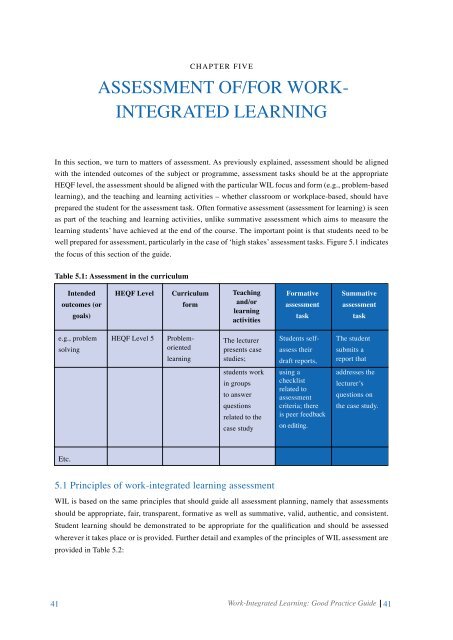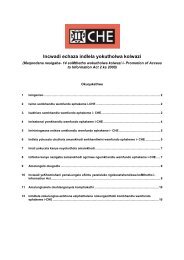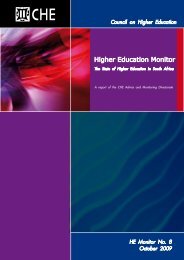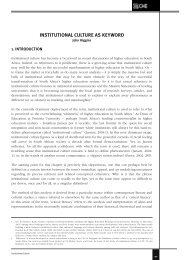Work-Integrated Learning: Good Practice Guide - CHE
Work-Integrated Learning: Good Practice Guide - CHE
Work-Integrated Learning: Good Practice Guide - CHE
Create successful ePaper yourself
Turn your PDF publications into a flip-book with our unique Google optimized e-Paper software.
In this section, we turn to matters of assessment. As previously explained, assessment should be aligned<br />
with the intended outcomes of the subject or programme, assessment tasks should be at the appropriate<br />
HEQF level, the assessment should be aligned with the particular WIL focus and form (e.g., problem-based<br />
learning), and the teaching and learning activities – whether classroom or workplace-based, should have<br />
prepared the student for the assessment task. often formative assessment (assessment for learning) is seen<br />
as part of the teaching and learning activities, unlike summative assessment which aims to measure the<br />
learning students’ have achieved at the end of the course. the important point is that students need to be<br />
well prepared for assessment, particularly in the case of ‘high stakes’ assessment tasks. Figure 5.1 indicates<br />
the focus of this section of the guide.<br />
Table 5.1: Assessment in the curriculum<br />
5.1 Principles of work-integrated learning assessment<br />
WIL is based on the same principles that should guide all assessment planning, namely that assessments<br />
should be appropriate, fair, transparent, formative as well as summative, valid, authentic, and consistent.<br />
Student learning should be demonstrated to be appropriate for the qualification and should be assessed<br />
wherever it takes place or is provided. Further detail and examples of the principles of WIL assessment are<br />
provided in table 5.2:<br />
41<br />
Intended<br />
outcomes (or<br />
goals)<br />
e.g., problem<br />
solving<br />
Etc.<br />
cHAPtEr FIVE<br />
ASSESSMENt oF/For <strong>Work</strong>-<br />
INtEgrAtEd LEArNINg<br />
HEQF Level<br />
HEQF Level 5<br />
Curriculum<br />
form<br />
Problemoriented<br />
learning<br />
Teaching<br />
and/or<br />
learning<br />
activities<br />
the lecturer<br />
presents case<br />
studies;<br />
students work<br />
in groups<br />
to answer<br />
questions<br />
related to the<br />
case study<br />
Formative<br />
assessment<br />
task<br />
Students selfassess<br />
their<br />
draft reports,<br />
using a<br />
checklist<br />
related to<br />
assessment<br />
criteria; there<br />
is peer feedback<br />
on editing.<br />
Summative<br />
assessment<br />
task<br />
the student<br />
submits a<br />
report that<br />
addresses the<br />
lecturer’s<br />
questions on<br />
the case study.<br />
<strong>Work</strong>-<strong>Integrated</strong> <strong>Learning</strong>: <strong>Good</strong> <strong>Practice</strong> <strong>Guide</strong><br />
41






